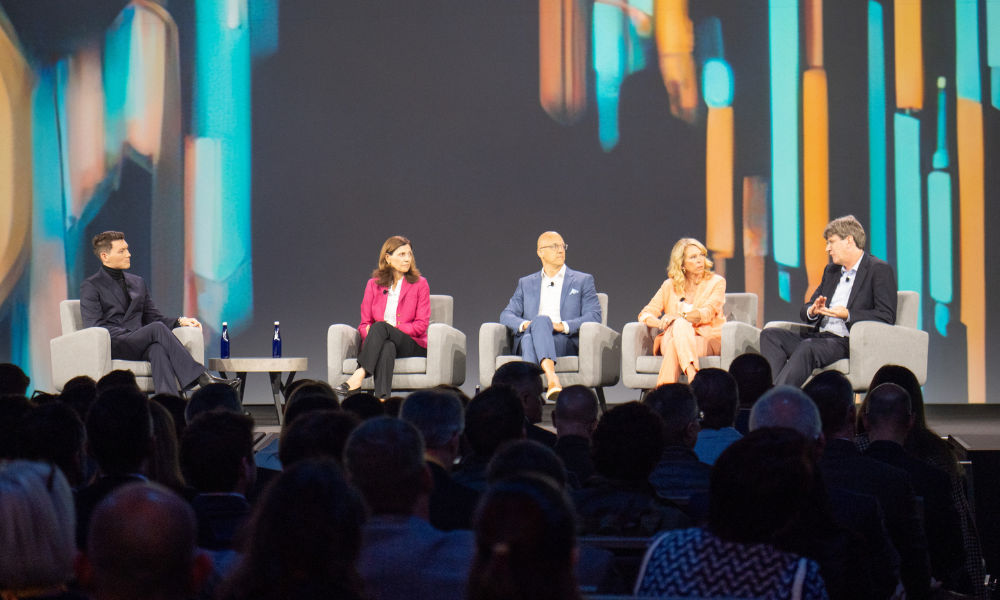

There are a lot of feelings about how markets and sectors will benefit – or suffer – during Donald Trump’s coming four years in office, but some investment strategists suggest people throw any expectations out the window.
In no small part, that’s because we’ve already seen this show. And while it’s likely that Trump’s second term will look different from his first, there are clear lessons about political bets on markets, panelists at the Charles Schwab Impact 2024 conference said.
Consider small-cap stocks and energy, said Liz Ann Sonders, managing director and chief investment strategist at Schwab.
“Be really careful about extrapolation around some of the narratives that come about when you have an election, when you have a candidate seeming to favor one area of the market,” Sonders said, pointing to headlines after Trump’s first win in 2016. “One of the overarching sector-oriented themes was that the Trump win was going to be fabulous for the traditional energy sector.”
Over Trump’s four years in office, that sector – made up of fossil fuel companies and those that support the industry – was down over 40 percent, Sonders said.
“The next-worst sector was up 20 percent,” she said. Energy “underperformed by 60 percentage points.”
During President Joe Biden’s term, energy has been “the best-performing sector by a significant margin.”
On the week following the 2024 election, the US stock market jumped, with small caps doing particularly well, likely driven by expectations that deregulation during the coming administration will benefit smaller companies and prompt mergers and acquisitions. The Morningstar US Small Cap Index had a return of 6.7 percent, reflecting the strongest performance it’s seen in 2024.
During Trump’s first term, there was an expectation that domestic small-cap value would be one of, if not the best-performing segment, said Jeff Kleintop, chief global investment strategist at Schwab. Emerging markets were projected to do the worst, in part because of the threat of tariffs, a similar theme for the forthcoming term, he said.
“What happened was the exact opposite,” he said. “Election trades are really hard for that reason.”
The simple reason for that was that economic growth was strong in 2017.
“It was more economics than policy that drove that relative performance,” he said.
Further, it’s hard to make generalizations about a segment as nuanced as small cap, Sonders said.
For example, about 40 percent of the nearly 2,000 companies in the Russell 2000 Index are not profitable, she said. Using a more filter to include higher performing small-cap stocks, like that used by the S&P SmallCap 600 Index, could be more useful, she said.
“The small-cap story has to be looked at a little more fine-tooth-comb-like,” she said. “It’s just silly to look at it in a monolithic way.”
Taking a simplistic view of myriad factors that influence markets doesn’t work, she said.
“Obviously I would caution against those narratives, from a trading or investment standpoint.”
But there are policy objectives that will affect the country financially.
While panelists said they did not expect Trump’s tariff ideas to be implemented as he proposed, some level of tariffs will likely be inflationary.
Kleintop cited the famous “Anyone? Anyone?” lecture by actor and former professor Ben Stein in the film “Ferris Bueller’s Day Off,” which explained how the Smoot-Hawley Tariff Act of 1930 did not work as intended and plunged the country deeper into the Great Depression. The US weighted average tariff rate on imports that resulted was about 20 percent – and Trump’s proposed tariffs would sit higher, at 26 percent, Kleintop said.
“It’s scary from that perspective,” he said. “But it’s a starting point for negotiations.”
Add in the mass deportations Trump has pledged for undocumented immigrants, threats to the independence of the Federal Reserve, and proposed extensions or increases to tax cuts, and things become less predictable.
“The bond market is grappling with all these issues. What you can see in the term premium is that extra yield that investors [would] need to buy long-term bonds” compared with short-term bonds, said Kathy Jones, chief fixed income strategist at Schwab.
Immigration policies “could reduce the size of the labor force by 8 percent or more,” she said, which would strain employers and push up labor costs. “We’re at a time when native-born Americans are retiring and immigrants are taking their place.”
The Fed will watch all of this play out and could be more conservative with rate cuts next year, she said, noting that the terminal rate for the cycle could be 3.5 percent or 4 percent rather than the prior expectation of 2.75 percent.
“It makes them dial back,” she said. “I can just see them saying, ‘We were on a path to cutting rates.’”

“LPL has evolved significantly over the last decade and still wants to scale up,” says one industry executive.

Survey findings from the Nationwide Retirement Institute offers pearls of planning wisdom from 60- to 65-year-olds, as well as insights into concerns.

Donald Trump's second turn at the White House is expected to bring a fresh bout of turbulence, supercharging retail demand.

“After learning about a bad actor who is barred, the securities industry should have a responsibility to put clients on notice,” one lawyer said.

Wealth managers weigh in on the chipmaker's influence over the greater market in the wake of its earnings report.
Streamline your outreach with Aidentified's AI-driven solutions
This season’s market volatility: Positioning for rate relief, income growth and the AI rebound
